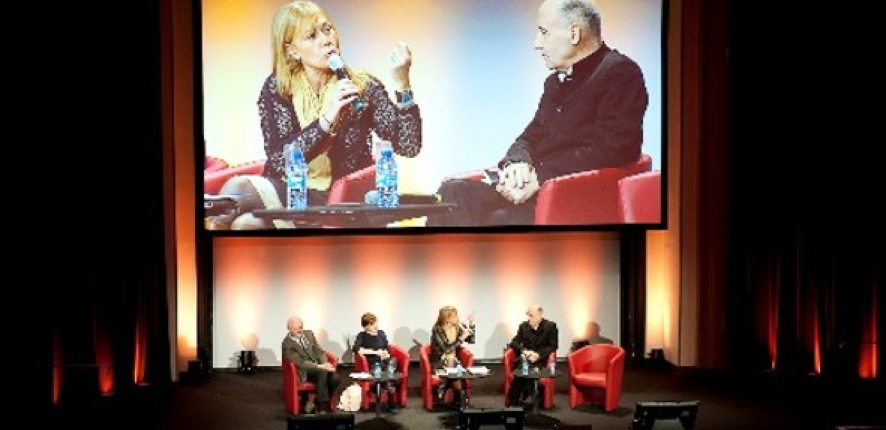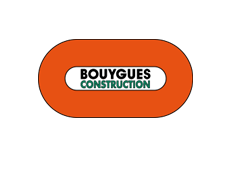Reinventing cities begins with collective discussions

Cities - engines for implementing the Paris Agreement?
With 70% of greenhouse gas emissions related to end-use in cities, they have a significant responsibility and play an undeniable role in the fight against climate disruption. Everything that makes up a city, currently often including noise pollution and CO2 emissions, nonetheless also represents a solution for fighting climate change.
The year 2015 was indeed marked by the commitments of cities in this regard. At the occasion of the Sommet des Elus Locaux (Summit for Locally Elected Representatives) in Paris on 4 December 2015 during COP21, mayors, governors, regional presidents and heads of local authorities supported the declarations made at the World Summit Climate & Territories in Lyon. They committed to promoting and exceeding the Paris Agreement objectives, reducing their annual greenhouse gas emissions by 3.7 gigatonnes by 2030, and aiming to use only renewable energy by 2050.
Cities have contributed at their level to the global fight against climate change with these voluntary and pioneering commitments. This move was helped along by the favourable context for recognising efforts made by civil society and non-state stakeholders such as local authorities and companies, encouraged by COP21 to make a plan of action.
 |
“Cities have the power to reduce emissions by nearly 200 gigatonnes.”
|
Users are the key to success
The commitments made by the heads of local government demonstrate their understanding that the efforts required to tackle climate change are also opportunities to improve quality of life, economic attractiveness and finances in cities.
The city of tomorrow, in other words, a city with a minimal ecological footprint, will only be sustainable if those who live and work there every day understand this and firmly commit to improving the environment in all of their uses.
Urban and architectural projects must therefore be in line with societal changes and support changes in lifestyles. They should be designed as new opportunities to reconnect humans with nature and adapt to new uses, through architectural flexibility, for example. The transformation of our lifestyles also represents educational opportunities.
 |
“A sustainable city is one that creates sustainable production and consumption — a matter which principally concerns residents.”
|
The sustainable city — a collective worksit
The sustainable city requires a systemic vision for a cohesive approach that considers the interconnections and interdependencies that exist between each of the elements that make up the city. The systemic approach removes the barrier between discussions and the role of stakeholders in the city such as local authorities, companies, architects, urban planners, developers, and residents, etc. There should be closer discussions between all stakeholders, particularly between public and private stakeholders. Even if privately-owned companies are actively working towards building sustainable cities, discussions must begin well in advance of the operational phase, from the design phase.
This collective work calls for new ways of designing the city, and must occasionally shake up the administrative and regulatory systems to experiment and innovate. This is the case in the “Reinventing Paris” call for projects, and also in the negotiated town plan for the Bassin à Flots project in Bordeaux, which was implemented through negotiating workshops. The Institut pour la ville durable (Institute for Sustainable Development) has therefore set itself the task of defining the conditions for success, including regulatory considerations, for urban innovation by creating future pilot sites in France.
There is no single model for a sustainable city
Beyond concepts, this symposium was a chance to share concrete solutions for building the sustainable city. In terms of buildings, a good example of using natural resources available on-site can be seen in the construction of the new Ministry of Defence headquarters at the old defence facilities at Balard. The site features the largest solar roof in Paris and a natural ventilation system. In general, Nicolas Michelin advocates active buildings, which find locally available natural energy, to passive buildings. Jacques Ferrier, meanwhile, has contributed to reconciling nature and the city in the landscape he created using hanging gardens in his building in Shanghai city centre.
On the neighbourhood level, the WWF is working alongside Métropole de Lyon and its developer to implement its ten sustainability principles and support daily life in the Lyon Confluence neighbourhood, the first WWF sustainable neighbourhood.
Finally, Bouygues Construction chose Switzerland and its “2000 Watt society” initiative to realise its sustainably city ambitions. Inspired by the Nordic lifestyle, the Eikenøtt neighbourhood is filled with innovations that place the user at the heart of the system, from design to operation.
As different as they are, these solutions all respect one principle — the genius loci. The sustainable city cannot be a single model identically replicated in various settings. It must be adapted to the area's characteristics, the culture of its residents, and avoid the pitfalls of “simple” sustainable architecture, or even energy positive neighbourhoods, which are disconnected from the rest of the city and its social issues.
 |
“The urban architect must be able to synthesise several considerations to create the sustainable city”.
|
While economic development was the priority for many years, it is now essential to combine this with environmental and social requirements for a project to succeed.
Genius loci varies from country to country. China is currently undergoing exponential urbanisation and is facing entirely different challenges to the West — by 2025, 70% of the Chinese population will live in cities with more than one million inhabitants, and population projections estimate that four million hectares, or ten times the size of New York city, need to be urbanised in the next two decades.
This particular context creates a dynamic and a need to act, which can be seen in the design of urban and architectural projects. The sustainable city is also a question of time. Exemplary urban design varies over time. Stakeholders in the city shouldn't trust projections that look too far into the future, as they often don't reflect the reality of what happens.
Cities have become the new biotope for people, and represent the sole living space for some. Reinventing them has become an urgent matter in order to preserve our planet and the well-being of humankind.
 |
“We are on the cusp of making life in the city enjoyable once again.”
|
Although town planning and architecture have always been confronted with society’s wishes, today they must respond to the wish for a more environmentally responsible city. The transition is simultaneously environmental, economic and social. It calls for changes in our consumption, economic models and lifestyles. The user-inhabitant is a key figure in bringing about this change.
Solutions do exist, and it is possible to fight climate change while also improving the urban quality of life. But we must act fast.
Consult the complete version of the event
1/Summary of plenaries : here
2/Summary of round tables
• Nature in the city:Urban biodiversity and the fight against climate change
• Towards a no-waste city: Reducing, managing, and recovering urban waste
• Uses and lifestyles: The role of inhabitants in reinventing smart cities
• Living together better with digital technology
• Buildings and energy: Reducing energy consumption and the performance of the energy mix
• New mobility services: What are the solutions for “last mile” urban logistics?
• Urban resilience: How should cities be adapted to face the impacts of climate change?
• Using the city to feed the city: The role of urban agriculture?
